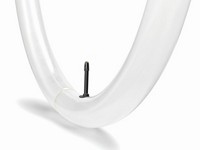Advertisement
Grab your lab coat. Let's get started
Welcome!
Welcome!
Create an account below to get 6 C&EN articles per month, receive newsletters and more - all free.
It seems this is your first time logging in online. Please enter the following information to continue.
As an ACS member you automatically get access to this site. All we need is few more details to create your reading experience.
Not you? Sign in with a different account.
Not you? Sign in with a different account.
ERROR 1
ERROR 1
ERROR 2
ERROR 2
ERROR 2
ERROR 2
ERROR 2
Password and Confirm password must match.
If you have an ACS member number, please enter it here so we can link this account to your membership. (optional)
ERROR 2
ACS values your privacy. By submitting your information, you are gaining access to C&EN and subscribing to our weekly newsletter. We use the information you provide to make your reading experience better, and we will never sell your data to third party members.
Materials
Pushing wind turbine blades toward 200 meters
Covestro pushes polyurethane, not epoxy, as the polymer needed to make blades bigger and lighter
by Alex Scott
July 24, 2017
| A version of this story appeared in
Volume 95, Issue 30

Climate change skeptics have pointed to wind turbines as subsidy-dependent folly for decades. But that scenario is rapidly being blown away. Thanks in part to novel polymer chemistry, turbines are on track to leave the cost of electricity from fossil fuels in their shadows.
Onshore wind turbines already compete with coal and gas in Europe, generating electricity at a cost between $59 and $125 per MWh, according to the European Commission.
And turbines should get even more competitive as polymer chemists work to improve them by developing lighter and stronger materials that make for longer and more efficient blades.
Most turbine blades are fabricated by combining epoxy resin with fiberglass in a giant mold. Typically, sheets of fiberglass are laid over a balsa wood frame to create top and bottom halves of the blade. The halves are sealed together like a clamshell and then impregnated with epoxy and its hardening agent at about 70 °C to aid the reaction.
But Covestro, the former plastics business of Bayer and the inventor of polyurethane, claims its polyurethane resin is stronger than epoxy and thus more suitable for manufacturing large turbine blades. Not surprisingly, epoxy resin makers beg to differ.
Thanks partly to the continual development of epoxy materials, blades have doubled in size since the 1980s, extending to a length today of about 95 meters. This blade growth significantly increased turbine output and efficiency. For example, extending the length of a blade from 60 to 80 meters more than doubles power output from 4.1 to about 9.5 MW. A single large turbine can power about 2,400 homes compared with a 60-meter-blade turbine’s 900 homes.
Making a blade out of polyurethane requires 10% less material than for a blade of the same strength made from epoxy, claims Covestro’s chief executive officer, Patrick Thomas. Less material can mean lighter blades that are more efficient because they need less wind to turn them. The polyurethane blades are also cheaper, Thomas says, which is important given that blades constitute about 30% of total wind turbine manufacturing cost.
And the sales potential is huge. Covestro estimates that 300,000 metric tons of polymer are used to make wind turbine blades every year. Today, estimates market research firm MarketsandMarkets, about 82% of blades are made with epoxy resin composites, with polyester composites taking 14% and vinyl ester 2%. Polyurethane and all other resins account for the rest.
The polymer market for turbine blades is set to rise by more than 9% annually, MarketsandMarkets forecasts.
Kim Klausen, who heads Covestro’s wind energy program and runs the firm’s wind technology center in Denmark, argues that over the next five years, polyurethane—not epoxy—will be the better option to enable the turbine industry to make longer blades. Today, the longest blades are 95 meters, but soon they will be 120 meters, Klausen says.
“The superior mechanical and fatigue properties of polyurethane will make it easier to design and produce such long blades,” he says.
In addition to proposing polyurethane as the main structural material for turbine blades, Covestro has developed a polyurethane elastomer coating that can protect blades against damage caused by raindrops, which can hit the windward edge of the blades at almost the speed of sound.
In a testing chamber in Denmark, Covestro has determined that its new elastomeric polyurethane coating can withstand 20 hours of simulated high-speed raindrops, compared with two hours for a standard coating. Twenty hours in the simulator equate to about 20 years of life on large offshore turbines. Current blades have to be repaired every couple of years, Klausen says.
Another benefit of polyurethane, Covestro claims, is that the resin can significantly increase productivity at blade factories.
Covestro says the viscosity of its polyurethane is one-sixth that of standard epoxy, meaning that the resin can be infused faster in giant turbine molds. The resin also cures faster than epoxy and at a significantly lower temperature. All in all, polyurethane provides a notable reduction in production time, Klausen says, a major advantage given the vast amount of space needed to mold each blade.
A challenge for Covestro, though, is that with lower resin viscosity and faster curing time, turbine production processes also have to change. European turbine producers are loath to move away from their existing systems, Klausen laments. “Here we see a big difference in Chinese culture, as Chinese firms are far more open to new thinking,” says Klausen, who has been working with Chinese turbine manufacturers.
Luckily for Covestro, China is the world’s biggest market, accounting for 43% of the world’s new turbines last year.
Turbine evolution
The ratio of electricity generated to length of blade increases with rotor diameter, making large turbines more efficient. Diameters are now approaching 190 meters.

Although Covestro contends that polyurethane is the most cost-effective material with which to make wind turbine blades, epoxy producers such as Dow Chemical and Huntsman Corp. are not about to roll over.
“The customer feedback we are hearing, in particular with regard to large blades of between 50 and 80 meters in length, is that epoxy is the best material for the job,” says Dietmar Leibrock, Huntsman’s European sales leader for the wind industry. “If demand for large blades continues, then we believe epoxy will remain an important material of choice.”
MarketsandMarkets also predicts that epoxy will continue to be the blade material of choice. Even from its small base level, polyurethane use in wind turbines will grow more slowly than the overall market through 2021, it forecasts.
While Covestro tries to carve out a place for polyurethane in the wind turbine market, it’s also looking a decade or more ahead when turbine blades approach 200 meters in length and will likely require a whole new set of materials.
At this scale, carbon fiber will need to replace fiberglass to attain the stiffness necessary to keep blades from bending and hitting the turbine tower, Klausen observes. And much research will be required into how resins—be they polyurethane or epoxy—interact with the new fiber. Covestro, Klausen says, is already working on it.





Join the conversation
Contact the reporter
Submit a Letter to the Editor for publication
Engage with us on Twitter